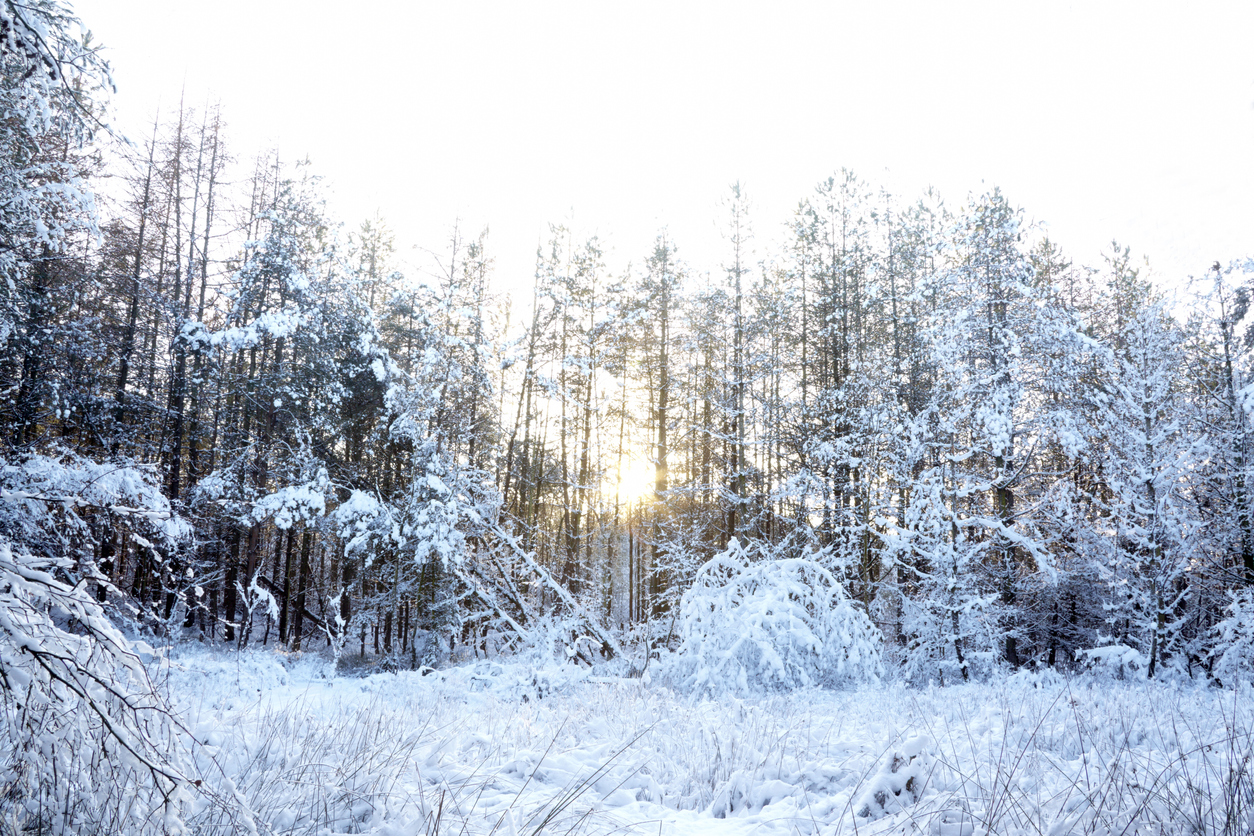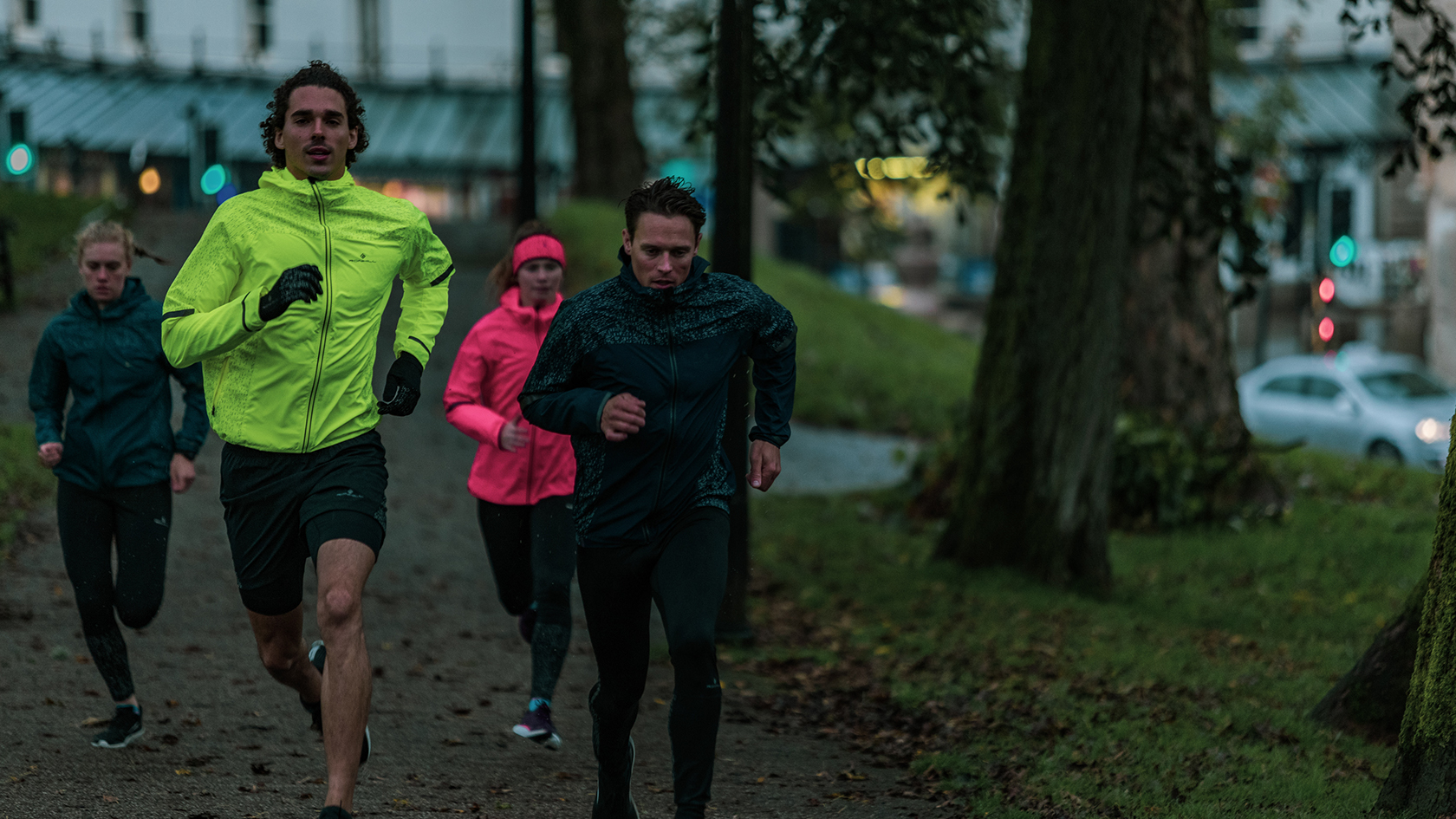Winter Run Layering Guide: Cold & Wet Weather
Running through winter’s chill, wind, and rain is a rite of passage for many UK runners. But let’s be honest—cold and wet weather can make even the most dedicated runner think twice before lacing up. The secret to staying motivated, comfortable, and safe through the darkest months? Mastering the art of winter run layering.
How Many Layers do I Need When Running in Cold Weather?
- If it’s 10-12°C outside, it feels like 20°C on a run. Wear running tights or running shorts with a long sleeve running top. For weather protection, take a lightweight waterproof that’s easy to stuff into your pocket or tie around your waist.
- If it’s 5°C outside, it feels like 15°C on a run. Wear running tights with a technical base layer and warm or lighter-weight long sleeve running top with a waterproof and windproof jacket.
- If it’s 0°C outside, it feels like 10°C on a run. Wear thermal running tights or compression tights with a technical base layer, long sleeve top and weatherproof jacket.
- If it’s -2°C or below outside, it feels like 8°C on a run. Wear winter-weight running tights with a base layer, long sleeve top and waterproof and windproof jacket. Protection for head and hands is advisable too.
Winter Running Layering Checklist
- Technical base layer (synthetic or Merino)
- Insulating mid layer (fleece or wool)
- Waterproof/windproof outer jacket
- Thermal running tights or leggings
- Hat or headband
- Gloves (thermal or waterproof)
- Neck gaiter or buff
- Merino or synthetic socks
- High-traction running shoes (consider waterproof)
- Reflective gear and/or head torch
- Anti-chafing balm
- Waterproof storage for electronics
The Three-Layer System Explained
When it comes to running in the unpredictable British winter, the three-layer system is your best defence against the elements. This approach isn’t just about piling on clothes—it’s a science-backed method to keep you warm, dry, and comfortable, no matter how low the mercury drops or how hard the rain falls. Let’s break down each layer in detail, exploring the best materials, fit, and features, as well as pro tips for making the most of your winter running kit.
1. Base Layer: Moisture Management
The base layer is your first line of defence against winter’s dampness. Often overlooked, it sits directly against your skin and is responsible for one of the most crucial tasks: moisture management. When you run, your body generates heat and sweat—even in freezing temperatures. If sweat stays trapped against your skin, it can quickly cool and leave you feeling clammy, cold, and uncomfortable.
For an effective base layer, choose technical synthetic fibres like polyester or polyamide, or opt for natural Merino wool, as both materials excel at wicking moisture away from your skin and drying rapidly to keep you comfortable during winter runs. The fit is crucial—a base layer should be snug, almost like a second skin, to efficiently move sweat away and prevent moisture from lingering; avoid loose or baggy tops, as they can trap moisture and diminish the layer’s effectiveness. When it comes to weight, select lightweight or midweight options based on the severity of the cold: heavier base layers are ideal for sub-zero conditions, while lighter ones are better suited for milder winter days, ensuring you stay warm without overheating.
Why Avoid Cotton? Cotton absorbs and holds onto moisture, which means once it gets wet, it stays wet. This can lead to rapid heat loss and increases the risk of chafing and discomfort.
Popular Choices:
- Merino wool long-sleeve tops for natural odour resistance and warmth.
- Synthetic seamless base layers for high-intensity sessions.
- Short-sleeve or sleeveless options for runners who tend to overheat.
Pro Tip → If you’re prone to sweating, bring a spare base layer to change into post-run. You’ll warm up faster and avoid post-exercise chills.
2. Mid Layer: Insulation
The mid layer is your personal radiator. Its primary job is to trap warm air close to your body, creating a buffer against the cold outside. This layer is all about balancing warmth with breathability, ensuring you stay toasty without overheating as your run intensifies.
When choosing a great mid layer for winter running, opt for fabrics like fleece, which is a classic choice known for its excellent warmth-to-weight ratio and breathability, or Merino wool, which naturally regulates temperature and resists odours; technical synthetic blends are also popular for their lightweight warmth and effective moisture-wicking properties. The fit should be slightly looser than your base layer—close enough to trap heat efficiently, but not so tight that it restricts movement and breathability, nor so loose that it allows warmth to escape. Look for features such as thumb loops, half or quarter zips for adjustable ventilation, and flat seams to reduce chafing, while some mid layers also incorporate wind-resistant panels or extra insulation in key areas to further enhance comfort and performance during your cold-weather runs.
Popular Choices:
- Lightweight fleece pullovers for versatility.
- Technical hoodies with moisture-wicking linings.
- Hybrid tops with insulated panels for targeted warmth.
3. Outer Layer: Protection
The outer layer is your shield against the elements. It’s designed to keep wind, rain, and snow at bay while allowing sweat and excess heat to escape. The right outer layer can be the difference between a miserable slog and an exhilarating winter adventure.
When selecting an outer layer for winter running, prioritise jackets with a high waterproof rating—measured in millimetres—and fully taped seams to ensure true wet-weather protection, while keeping in mind that water-resistant jackets, though lighter and more breathable, may not withstand heavy rain. Windproof fabrics are crucial for blocking cold gusts and maintaining your core temperature, especially on blustery days. Breathability is essential for runners, so look for features such as underarm vents, mesh panels, and breathable membranes, which help prevent overheating and moisture build-up inside your jacket.
The fit should be roomy enough to comfortably accommodate your base and mid layers without restricting movement, but not so loose that it flaps in the wind. Additional features like adjustable hoods, storm flaps, reflective details for visibility, and packability—allowing you to stow the jacket away if the weather improves—further enhance the outer layer’s performance and versatility
Types of Outer Layers:
- Hard Shell Jackets → Offer maximum protection from heavy rain and wind but can be less breathable.
- Soft Shell Jackets → More breathable and flexible, ideal for dry but windy days or light showers.
- Packable Shells → Ultra-lightweight and compact, perfect for changeable British weather.
Popular Choices:
- Gore-Tex running jackets for uncompromising waterproofing.
- DWR-coated soft shells for breathability and comfort.
- Lightweight windbreakers for blustery but dry conditions.
FAQs
Layer up with a technical base, insulating mid layer, and waterproof outer shell. Add thermal tights, gloves, hat, and neck gaiter for extra warmth. Dress as if it’s 10°C warmer than it actually is—avoid overdressing.
Wear a waterproof, breathable jacket. Choose quick-drying base and mid layers. Avoid cotton, as it holds moisture. Protect electronics in waterproof pockets or bags.
Prioritise a windproof outer layer. Use a snug base layer to reduce wind penetration. Cover extremities—ears, hands, and neck.
Opt for shoes with deeper tread for grip on wet or icy surfaces. Consider waterproof models or add traction cleats for snow/ice. Dry shoes thoroughly after each run to prevent odours and wear.
Set goals and track progress (e.g., join a Strava club). Run with friends or a local group. Reward yourself post-run with a hot drink or treat. Remind yourself of the mental and physical benefits—winter running builds resilience and boosts mood.
Related Articles







